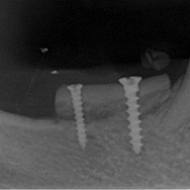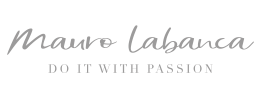ORAL SURGERY
Bone Regeneration
It is performed in cases where the bone of the patient is not sufficient to allow the placement of implants, for reconstructing bone portions destroyed by cysts, after very complex extractions, or in treatments for severe periodontal disease. If the bone has undergone a strong retraction, due to the lack of roots that were previously extracted, for congenital reasons or due to other treatments that have caused damage to the bone, it becomes essential to act directly on the bone through a process called regeneration or reconstruction. The techniques for regeneration are various. The first one is a kind of autotransplantation (autograft or equivalent bone): the bone is taken from another part of the body (usually from the skull or jaw depending on the amount required) and is grafted on the bone to be regenerated; the process requires two separate surgeries and is thus very challenging. Instead of using own bone (autograft), it is possible to choose to use human bone from external sources, but always of human origin (homologous). This choice reduces the duration and the invasiveness of the surgical procedure because it does not require a withdrawal intervention, but exposes the patient to some additional risk of infection or immune reaction, because the material is grafted from a cadaver. The second type of regeneration requires an artificial bone (heterologous bone), that is made from a synthetic material. This material, wetted with the blood of the patient, is integrated with the bone for its osteoconductive characteristics. This type of intervention does not expose the patient to the risk of rejection and is the simplest solution. If the chosen “heterologous bone” is of animal origin (whether horse, bovine, pig, etc.) the potential risk of developing immune reactions or infectious will be greater, although in a very low percentage. In addition, this choice could be in conflict with some ethnic groups or certain religions. It is therefore necessary and important that the operator explains very clearly to the patient his choice and that the costs/benefits are properly understood and agreed by the patient. In other cases, the membranes are placed in the bone defect area in order to make the healing and regrowth of the bone faster and more predictable. Currently, the regeneration with platelet rich plasma (PRP) is increasingly used, which for the high concentration of undifferentiated cells, greatly increases the effectiveness of these techniques. The PRP is obtained by taking a small amount of the patient’s venous blood prior to the intervention. This blood will be put in a specific centrifuge and after appropriate separation it shall be used to mix the bone graft and to improve the quality and speed of wound healing with less bleeding and less post-operative swelling.
Extended bone reconstructions with graft from oral or extra-oral donor areas
Surgical technique for recreating the anatomical conditions that existed prior to the loss of the present teeth elements, reconstructing the skeleton structure and the soft tissues. When it comes to the pure transverse deficits, in which the crest splitting technique or the guided bone regeneration do not allow to solve the deficiency, an important possibility is the use of a bone block fixed to the area to be corrected. The autologous bone is the gold standard in regenerative surgery because it is immediately recognized by the body and quickly takes the same characteristics as the native bone. This technique dramatically increases the morbidity of the intervention, having to resort to an intraoral bone graft (from the mandible or the chin) or an extraoral one (the iliac crest or calvaria) depending on the amount of bone needed to correct the atrophy. In recent years there has been greater use of homologous bone, taken from cadavers, previously frozen, in order to eliminate the antigenic power while retaining the osteogenesis ability.

